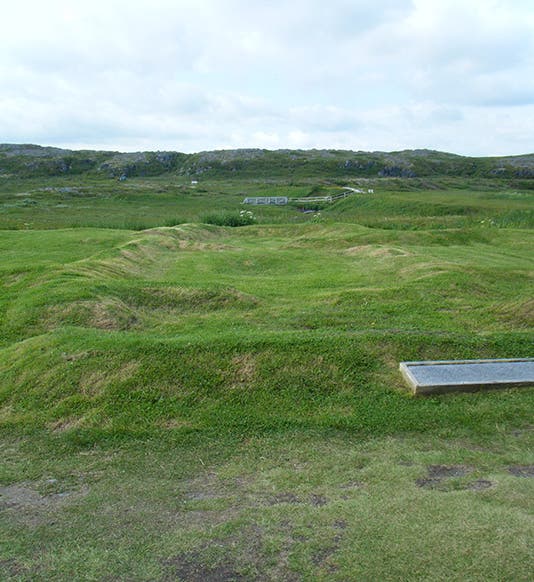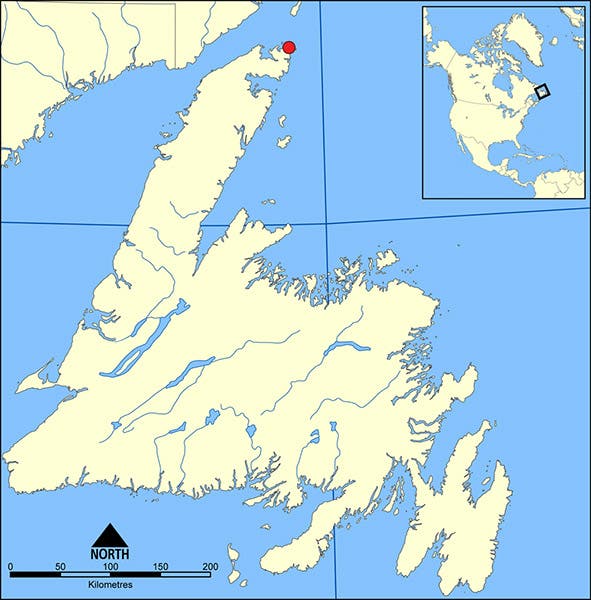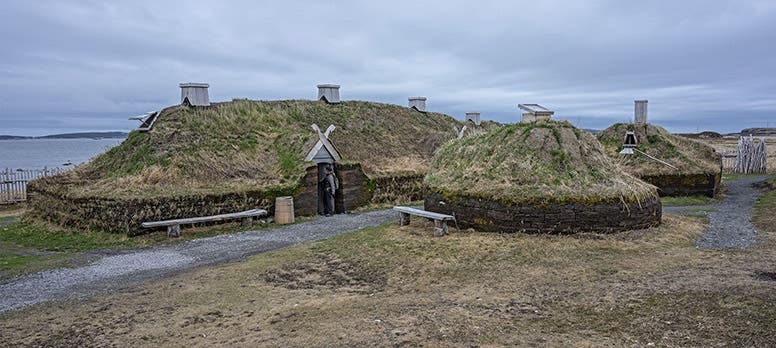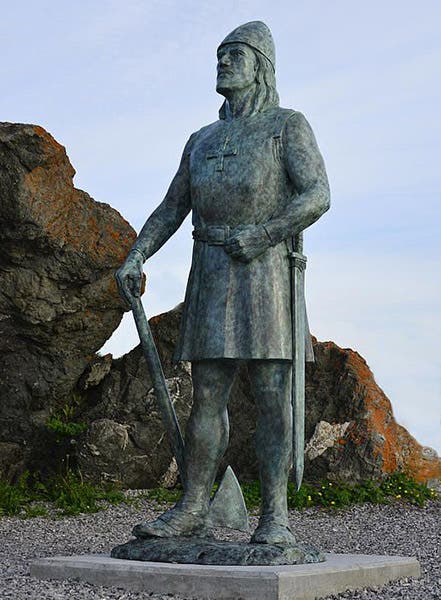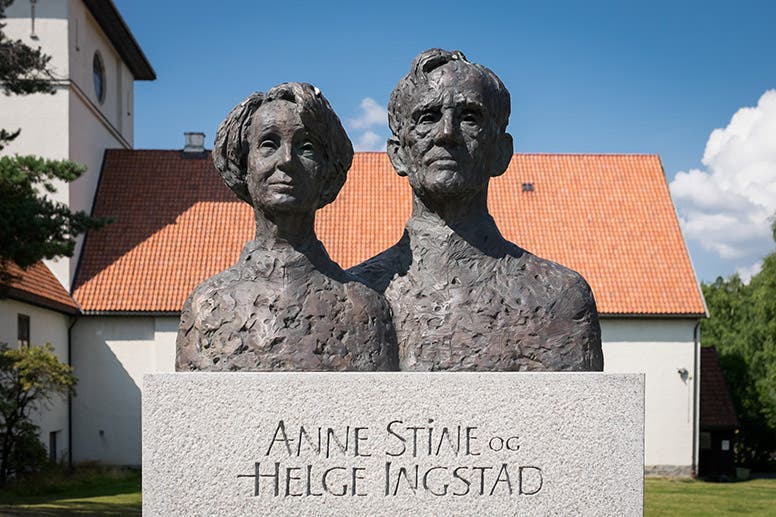Scientist of the Day - Helge Ingstad
Helge Ingstad, a Norwegian explorer, was born Dec. 30, 1899. Ingstad's wife, Anne Stine, was an archaeologist, and both were descended from Norsemen and Norsewomen, so naturally they had an interest in the sagas of early Viking voyages across the North Atlantic. In 1960, the two discovered a site on a peninsula in northern Newfoundland that was once a Norse settlement. The site was originally called L'Anse aux Méduses, or Jellyfish Cove, but its name has morphed into the more-pleasant sounding L'Anse aux Meadows. Constructed about 1000 AD, it is the only known Norse settlement in North America, and hence the only known example of contact with the New World before Columbus. It consists of the remains of 8 buildings, originally sod over wood, and three workshops, including a smithy and a carpenter shop. It was a settlement of perhaps one hundred people. It is possible that L’Anse aux Meadows was the fabled Vinland of Leif Erikson, or more probably, the northernmost part of it, perhaps the settlement Leifsbudir, mentioned in the Greenlanders Saga.
Ingstad and Stine's search bore fruit where all others had failed because they rejected the assumption that Vinland meant a land of vines (grapes), which would have pushed the location much further south to Massachusetts. Instead, they sought a site that would appeal to settlers from the far north, and which would have had easy access to the sea, and hence be on a peninsula.
When the first World Heritage Sites were identified in 1978, L'Anse aux Meadows was included on the initial list (WHS no. 4), which is quite astonishing, given that its existence was not even known until 1960.
You can (and should) visit the site, but be advised that much of what you will see, including all the buildings, are reconstructions (third image). Once the excavations were completed, Canadian officials had the entire site covered in sand, to protect it, and then sodded over, preserving it for future archaeologists.
On Oct 9, we celebrated Leif Erikson as our Scientist of the Day, and briefly discussed and illustrated l'Anse aux Meadows in that post. Mostly, we illustrated statues of Leif Erikson, since there are an inordinate number of them in the United States. L'Anse aux Meadows did not have such a statue for a long time. Fortunately, in 2013, a replica of the Erikson statue in Seattle was installed at the World Heritage Site (fourth image), so visitors can see a representation of the Viking who probably landed at Jellyfish Cove a millennium ago and established this settlement.
In 2007, the Norwegian Royal Navy launched a frigate that they named Helge Ingstad (fifth image). It was an impressive ship and performed admirably, until in 2018, it collided with a tanker and sank along the shore. It was declared a total loss and scrapped. Happily, Helge and Anne have a more lasting monument in the form of a pair of busts that stand outside the Viking Ship Museum in Oslo (sixth image).
Helge Ingstad lived to be 101 years old, dying in 2001. He is one of only two scientists I know who lived through a full century. The other is Arnold Beckman.
Dr. William B. Ashworth, Jr., Consultant for the History of Science, Linda Hall Library and Associate Professor emeritus, Department of History, University of Missouri-Kansas City. Comments or corrections are welcome; please direct to ashworthw@umkc.edu.

